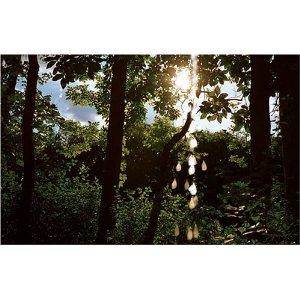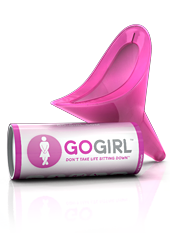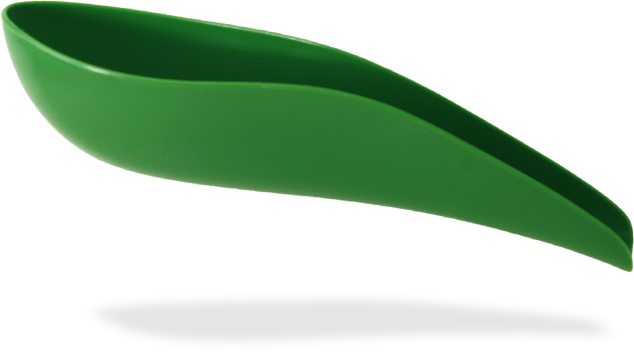posted 15 years ago
Interesting thread.
Y'know, Paul, anytime you want to ask an inappropriate question about women's personal lives, you could always email one of us ladies and get us to propose the topic.
But I suppose it's better to be reminded that we're in a public space, and the conversation is in mixed company.
So before sharing personal information, may I suggest to any voyeuristic young males that now would be a really good time to check out some other thread that is actually relevant to your healthy moral development .... but if this thread seems relevant to your development or responsibilities, read on.
As I understand it, the purpose of sharing this information is
- to allow women to share notes and get more comfortable with "nature-pee" options, and
- to help managers of either gender who are responsible for toileting facilities or landscaping, to meet most women's needs while maximizing the return of those nutrients.
I fall in to the "sometimes A, sometimes B" category.
A: I appreciate the freedom to "nature pee," and often resent its absence in a city or suburb. I'm not bold or desperate enough to pee in a street gutter, even in the dark, though I've certainly eyed some bushes with longing while checking my pockets for loose change to buy access to the 'customers only' restrooms.
I've been on enough campouts where the bush was the primary recourse (20 campers, one stall, 1/4 mile away) to get plenty of practice. So with sufficient privacy, and changes of clean underwear, I am happy to pee outside or into a garden bucket.
B: Yet even on permaculture places that actively encourage it, sometimes it's difficult to get enough privacy to feel comfortable dropping my pants. Especially in the garden, where I think the nutrients are most useful. I travel as an instructor, so the only time I get a pee break is during breaks, and there are always plenty of other people looking for bushes at the same time...
Favorite approaches:
1) Outhouse-with-a-view: I appreciate this approach, where a permaculture place sets aside a section of the woods, or garden sheds, that is only accessible from one path and looks out on a trail-free screen of plants. I especially like the method where I can lower a flag or close a gate and signal for some privacy, since in most of these places a large number of people may be roaming the woods at a time. Once the flag is in place, I can pee wherever I like in that general area, then poop in the outhouse itself, using TP and returning it to the outhouse if I want, or soft leaves and wash-water.
2) Bucket: Given that the most private areas are rarely food-producing areas, I also very much appreciate it when composting toilets or outhouses are equipped with a pee-separator or bucket, so I can contribute to garden fertilization without sacrificing my modesty. Trees in shade may be happy to handle straight pee, but I've seen it turn moss yellow, and sometimes the most private places get over-used and smelly. I understand that pee should be watered down from 1:5 to 1:10 (mostly water) to avoid burning the plant roots, so a bucket may in fact be a more beneficial option than straight outdoor peeing anyway.
3) Guardian Angels: When hiking, etc. I am generally comfortable finding a private place for myself, often with the help of a "lookout" from my group. Women in many cultures seem to prefer to travel in company, even to the opera restrooms, and I feel no need to flout this tradition.
4) Skirts: as noted by others, skirts offer better privacy than trousers. I sometimes wear a certain green corduroy knee-length wraparound skirt as a "gathering apron" in addition to trousers or thick socks on a hike, for the pockets and privacy it provides. A coat around one's waist is much harder to keep clean, but anything roughly A-line seems to work OK. You can also angle a skirt to provide one-sided privacy while keeping it out of the mess, much like the tree provides for gentlemen.
5) I often secure some comfortable leaves ahead of time. Mullen, dock, plantain, alder, hazelnut, maple, even ferns or moss can help reduce the amount of scent remaining on my person. Wet leaves are great too. I've gotten pretty good at avoiding squatting over poison oak, thistles, etc.
6) I teach younger girls to "nature-pee" on campouts and day trips too. Main considerations are finding privacy (teaching girls to look out for each other, and non-peeing friends of both genders to respect the privacy of the peeing parties); keeping clothes clean and out of the way; finding a suitable TP-leaf ahead of time; and balancing so that your pee ends up downhill from you. You can sit or squat on a log and hang your butt over the edge (precarious), or just plant your feet on hight spots of absorbent forest floor, and aim for the middle. Do avoid standing with one foot downhill. Handwashing we sometimes do with hand sanitizer, or water bottles, or just be sure to wash up before lunch. We try to avoid "nature pooping" on day trips, as the sanitation issues are much greater.
7) Rags (Stop reading now, gentlemen, if you wish to preserve your innocence):
I've used that cup thing, found it messy enough to be inconvenient without a washstand nearby, and frankly I've never felt that comfortable trying to block the flow from the inside (toxicity concerns, as well as personal physical discomfort).
My current compromise solution is a bandana.
A red bandana is one of those emergency items I was taught to include in hiking gear (to signal for help, as I recall), but they are also handy for so many other things. Spare pack, sling, sunshield, dust mask, clothing repairs, fiber, bandage, ... and so I tend to have one on hand when my cycle swings by for a surprise visit. A good bandana is absorbant enough on its own to use as a stopgap, folded in quarters or eighths. They unfold to wash completely clean (those flannel re-usable pads often retain an odor even after machine washing). And you can get a full day or even overnight use out of them by stuffing absorbent material underneath the top layer, then replacing it and rotating the layers. When I'm stranded in civilization, absorbent material is usually TP or tissue; when I'm in the woods, it might be cattail or cottonwood fluff, or any convenient rags. When I'm feeling rich, and planning ahead, I get biodegradable, organically produced pads (fluff). Bandannas cost about $1-2 apiece even at retail, a fraction of the cost of reusable pads, and fair competition for the disposable ones given the number of convenient uses. Large handkerchiefs from old sheets or cotton curtain liners can be used the same way, at pennies apiece. In my great-grandmother's time, these 'napkins' were embroidered with a lady's initials, so they could remain personal even if the family laundry was done together.
I generally contribute my soiled fluff / TP back to whatever sewage treatment is the norm - into the toilet, composting toilet, or buried away from water in the backwoods. (Pads go in the bin, though, not down the old sewer lines; I don't compost them except in an intentionally humanure-safe compost system. I don't like the idea of our suburban neighbors' kid finding my bloody pad that some coyote has dragged out of our compost pile.) Municipal sewage solids often end up as fertilizer somewhere, so at least some of the nutrient does get reclaimed. Occasionally I use the rinse water from the cloth itself as a treat for (non-edible) houseplants.
I'm not too worried about blood in the woods - I go off trail to pee, so the chances of a human finding my mess are remote. Off-leash dogs might be a problem, but their owners should already know that they get into all sorts of unsanitary rubbish. We see dead birds, mice, nutria, etc. decomposing in the woods, so I figure the woods can deal with a little human waste. I do bury my scat like a good meat-eater, and keep it away from accidental contact by humans or livestock. And whenever possible, I rinse myself and in the process, dilute whatever remains in my wake.





 3
3













 hygeine is good to address, but the hugest factor for most women is just the feeling of being exposed or someone "might" see you
hygeine is good to address, but the hugest factor for most women is just the feeling of being exposed or someone "might" see you

































 But being we live in the city limits with close neighbors at the moment a coffee can and bringing it out there will have to do!
But being we live in the city limits with close neighbors at the moment a coffee can and bringing it out there will have to do! 3
3












 1
1








 1
1



























 1
1




























































 2
2






















